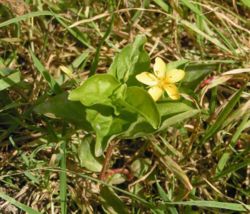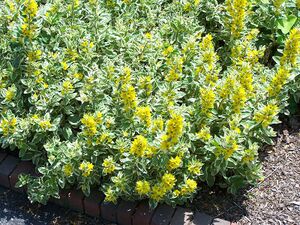Lysimachia
| Lysimachia {{{status}}} Fossil range: {{{fossil_range}}}
| ||||||||||||||||||||||||||||||||||||||||||||||||||||||||||||||||||
|---|---|---|---|---|---|---|---|---|---|---|---|---|---|---|---|---|---|---|---|---|---|---|---|---|---|---|---|---|---|---|---|---|---|---|---|---|---|---|---|---|---|---|---|---|---|---|---|---|---|---|---|---|---|---|---|---|---|---|---|---|---|---|---|---|---|---|
 Yellow pimpernel, Lysimachia nemorum | ||||||||||||||||||||||||||||||||||||||||||||||||||||||||||||||||||
| Plant Info | ||||||||||||||||||||||||||||||||||||||||||||||||||||||||||||||||||
| ||||||||||||||||||||||||||||||||||||||||||||||||||||||||||||||||||
| Scientific classification | ||||||||||||||||||||||||||||||||||||||||||||||||||||||||||||||||||
| ||||||||||||||||||||||||||||||||||||||||||||||||||||||||||||||||||
| [[{{{diversity_link}}}|Diversity]] | ||||||||||||||||||||||||||||||||||||||||||||||||||||||||||||||||||
| {{{diversity}}} | ||||||||||||||||||||||||||||||||||||||||||||||||||||||||||||||||||
| Binomial name | ||||||||||||||||||||||||||||||||||||||||||||||||||||||||||||||||||
| {{{binomial}}} | ||||||||||||||||||||||||||||||||||||||||||||||||||||||||||||||||||
| Trinomial name | ||||||||||||||||||||||||||||||||||||||||||||||||||||||||||||||||||
| {{{trinomial}}} | ||||||||||||||||||||||||||||||||||||||||||||||||||||||||||||||||||
| Type Species | ||||||||||||||||||||||||||||||||||||||||||||||||||||||||||||||||||
| {{{type_species}}} | ||||||||||||||||||||||||||||||||||||||||||||||||||||||||||||||||||
| Species | ||||||||||||||||||||||||||||||||||||||||||||||||||||||||||||||||||
| include: Lysimachia nemorum (yellow pimpernel) | ||||||||||||||||||||||||||||||||||||||||||||||||||||||||||||||||||
| [[Image:{{{range_map}}}|{{{range_map_width}}}|]] | ||||||||||||||||||||||||||||||||||||||||||||||||||||||||||||||||||
| Synonyms | ||||||||||||||||||||||||||||||||||||||||||||||||||||||||||||||||||
| {{{synonyms}}} |
Lysimachia is a genus of flowering plants. It is traditionally classified in the family Primulaceae but should, according to molecular phylogenetic study, be placed to the family Myrsinaceae [1].
Characteristics
Lysimachia species often have yellow flowers, and grow vigorously. They tend to grow in damp conditions. Several species within Lysimachia are commonly called loosestrife, although this name is also used for plants within the genus Lythrum.
Lysimachia species are used as food plants by the larvae of some butterflies and moths, including the Dot Moth, Grey Pug, Lime-speck Pug, Small Angle Shades and V-pug.
Species
Species within the genus include:
- Lysimachia atropurpurea (purple gooseneck loosetrife)
- Lysimachia ciliatum (fringed loosestrife)
- Lysimachia clethroides (gooseneck loosestrife) — a hardy perennial resembling a tall Speedwell and growing up to 3 feet (1 metre). Flowers from July on to September. Grows best in deep, rich loam in a sheltered position.
- Lysimachia fraseri (Fraser's yellow loosestrife, endangered)
- Lysimachia nemorum (yellow pimpernel)
- Lysimachia nummularia (creeping Jenny or moneywort) — extremely hardy, and easy to cultivate; every piece of the creeping root will, if taken off, make a fresh plant.
- Lysimachia punctata (spotted loosestrife)
- Lysimachia quadrifolia (whorled loosestrife)
- Lysimachia terrestris (swamp candles)
- Lysimachia vulgaris (garden or yellow loosestrife)
Reference
- ↑ M. Källersjö, G. Bergqvist & A. A. Anderberg (2000). "Generic realignment in primuloid families of the Ericales s. l.: a phylogenetic analysis based on DNA sequences from three chloroplast genes and morphology". American Journal of Botany 87 (9): 1325–1341.
External links
- Lysimachus' Dog & Nisaean Horses - Informative but non-scholarly essay on Lysimachia & Lysimachus (Annotated with Sources).
